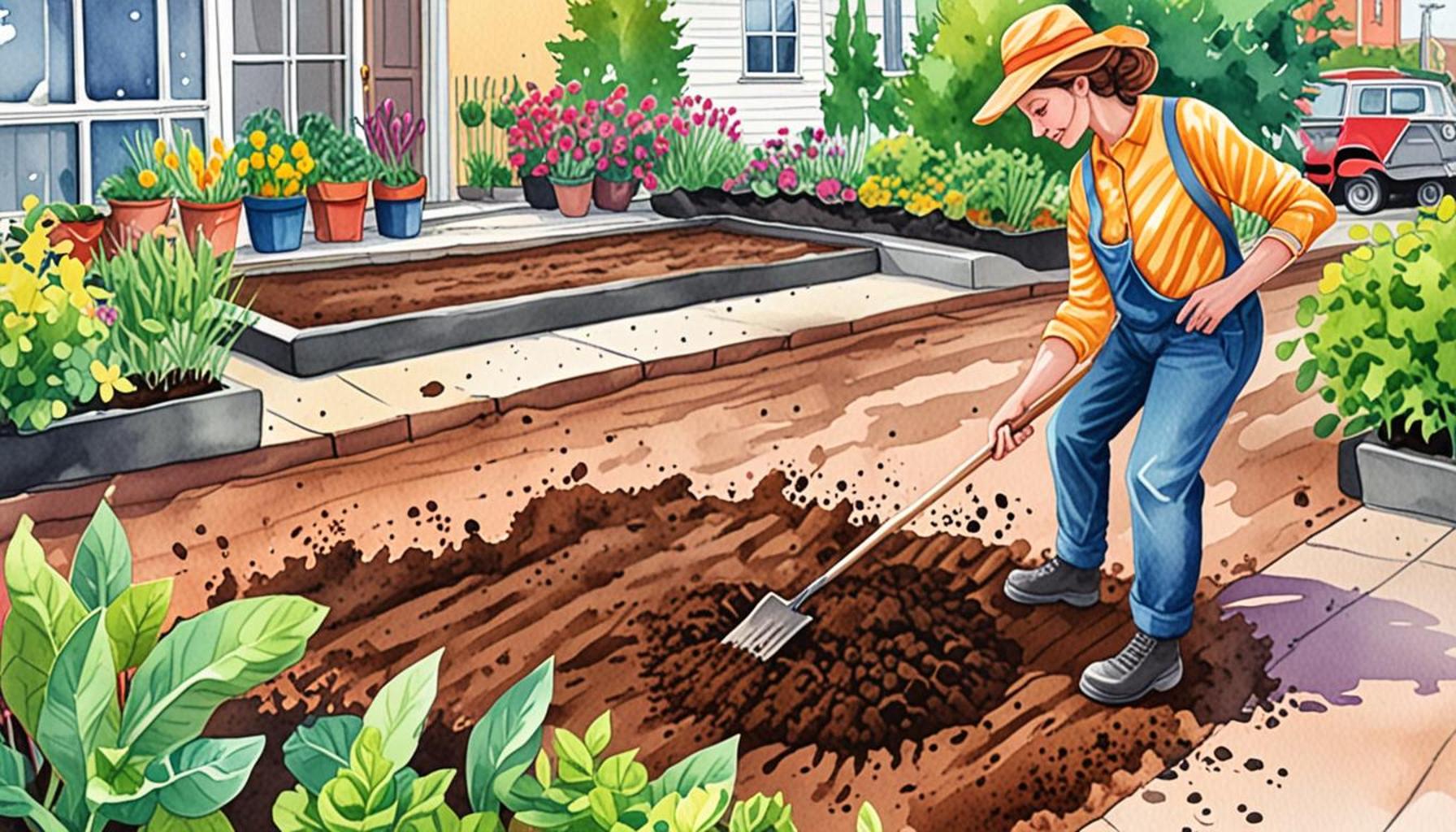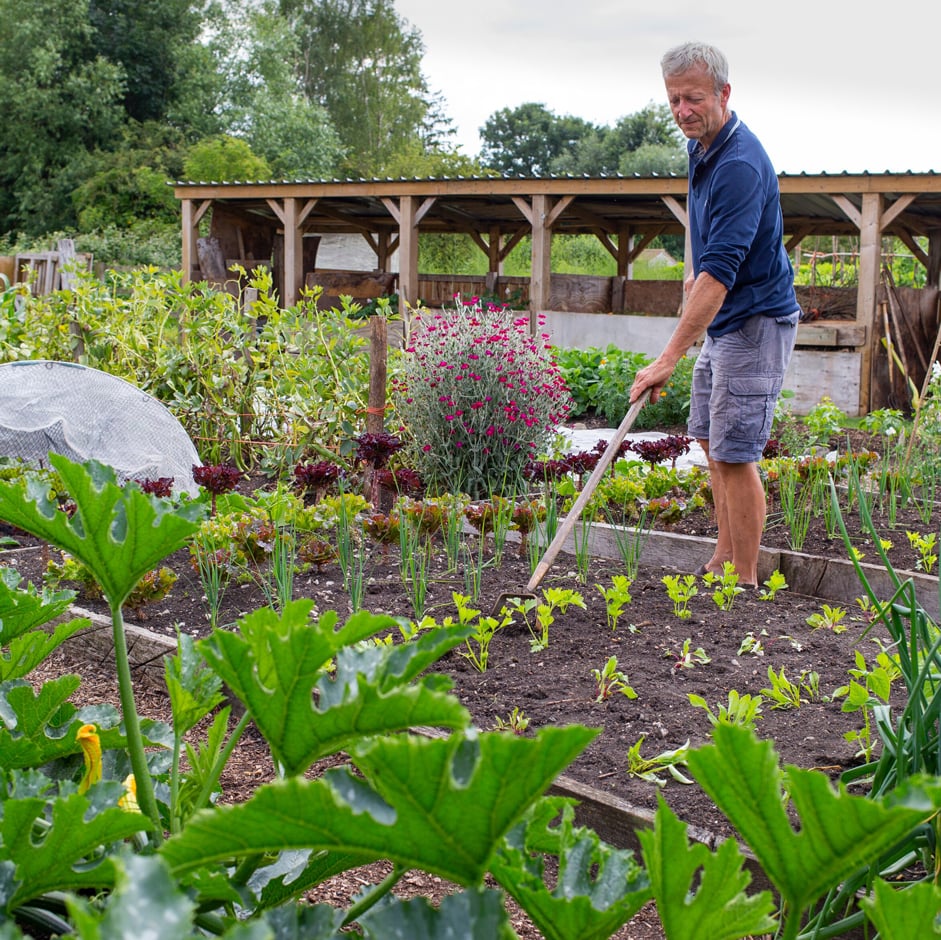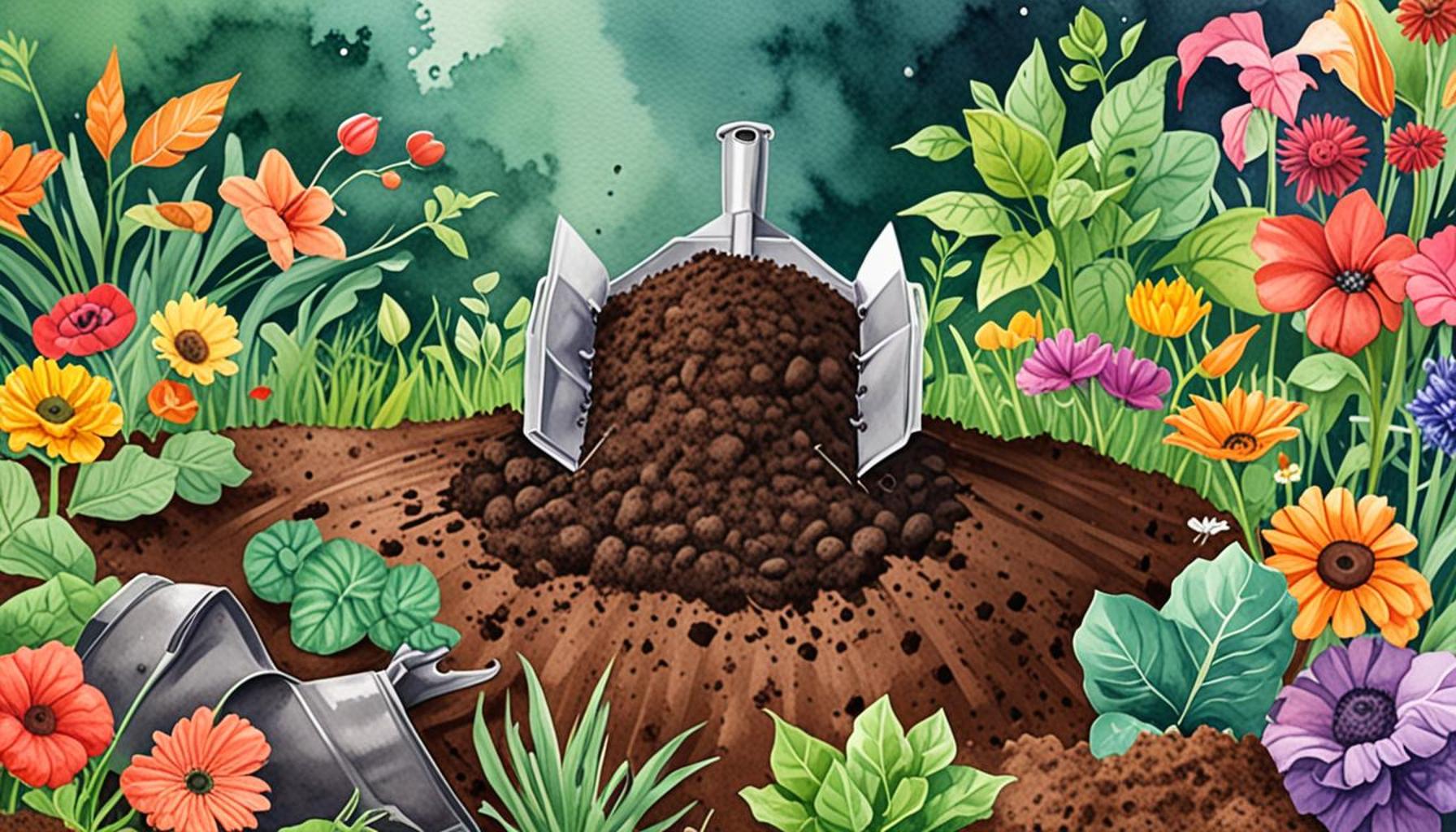Soil Preparation in Urban Environments: Tips for Beginner Gardeners in Limited Spaces

The Importance of Soil Preparation in Urban Gardening
In bustling cities, where space is limited, the dream of having a garden might seem out of reach. However, urban gardeners can triumph by mastering the art of soil preparation. This essential step lays the groundwork for thriving plants, even in the tightest spots. Understanding the unique challenges of urban soil can set the stage for success in your gardening endeavors.
The urban landscape presents various environmental challenges that can hinder plant growth. One prominent challenge is the quality of soil. Urban soil often lacks essential nutrients, due to the extensive construction and disturbance that has occurred over the years. Moreover, this soil may also suffer from compaction, which limits root expansion and water absorption. To successfully grow healthy plants, it is crucial to amend the soil and rejuvenate its structure.
Another critical issue facing urban gardeners is the presence of pollutants in the soil. In densely populated areas, contaminants such as heavy metals, pesticides, and industrial waste may linger, posing risks to both plant health and food safety. Conducting a thorough soil test is highly recommended to evaluate these contaminants and determine the necessary steps for remediation.
Space constraints further complicate the urban gardening scene. Many city dwellers may only have access to balconies, rooftops, or small backyards to cultivate their plants. Nonetheless, creative solutions can maximize these limited areas, transforming them into lush green spots. Implementing vertical gardening, hanging planters, or wall-mounted pots can significantly increase your gardening potential.
What if there were simple strategies to tackle these issues? With a little knowledge and effort, anyone can cultivate an urban garden that flourishes. Here are some initial steps to consider:

- Test your soil for pH and nutrient levels: Utilizing home testing kits or sending samples to a local extension service can provide insights into your soil’s health.
- Amend soil with organic matter: Incorporating compost, aged manure, or peat moss can enhance nutrient availability and promote better drainage.
- Use raised beds and container gardening techniques: Building raised beds allows for better soil control and drainage, while containers offer flexibility and ease of mobility.
The urban gardening movement is gaining momentum across the United States, promising fresher food options and a greener environment. Many cities, from New York City to Portland, celebrate community gardens and urban farming initiatives, making it easier for individuals to connect with their food sources. Your journey to create an oasis in the concrete jungle begins with understanding soil preparation. Ready to dig deeper? By embracing the challenges of urban gardening, you can cultivate a vivid and sustainable green space right outside your door!
DISCOVER MORE: Click here to learn about common soil preparation mistakes and how to avoid them</
Essential Steps for Preparing Urban Soil
As you embark on your urban gardening journey, the first and most crucial step is understanding how to prepare your soil effectively. Urban soil often differs significantly from rural soil due to factors such as compaction, contamination, and absence of organic materials. Tackling these issues requires a series of proactive measures that will transform your limited gardening space into a lush and productive environment. Let’s break down the essential steps for soil preparation in urban settings.
Conduct a Soil Test
Before you start planting, it’s imperative to know what you’re working with. A comprehensive soil test can reveal vital information about pH levels, nutrient content, and potential contaminants present in your urban soil. Many local agricultural extension offices offer affordable testing services, or you can purchase a home testing kit for a quick analysis. Knowing your soil’s composition allows you to take targeted measures to improve its health.
Amend Your Soil
Once you have a clear understanding of your soil’s condition, the next step is to amend it. Urban soil often lacks the essential nutrients that support plant growth, making organic matter amendments crucial. This can include:
- Compost: Adding compost not only enriches the soil with nutrients but also improves its texture and drainage capacity.
- Aged manure: This is another excellent organic amendment that can provide a slow release of nutrients to your plants.
- Pear moss: Helps improve aeration and retains moisture while providing an acidic component that can benefit certain plants.
Mix these organic amendments into the top layer of your soil to foster a more conducive environment for root development and nutrient uptake.
Consider Container and Raised Bed Gardening
When dealing with compacted or contaminated urban soil, raised beds and container gardening can be a game-changer. Raised beds allow you to create a controlled soil environment, providing better drainage and soil amendments tailored to your plants’ needs. Additionally, they minimize soil compaction and facilitate deeper root growth.
For those with even less space, containers can be a perfect solution. These adaptable gardening options come in various sizes and materials, allowing you to utilize balconies, patios, or windowsills. By selecting the right potting mix, you can ensure that your plants have the essential nutrients and drainage they require, regardless of the external soil conditions.
Ultimately, understanding the unique challenges of urban gardening prepares you for success. By taking these foundational steps, you can create an environment where your plants not only survive but thrive, adding vibrancy and greenery to the urban landscape. As you dig deeper into the science of soil preparation, you’ll uncover the pivotal role it plays in your gardening success. Now, let’s explore how to protect and nourish this precious resource!
Essential Soil Preparation Techniques
For urban gardeners working with limited spaces, soil preparation is crucial for creating a thriving garden. The type and quality of soil can significantly impact your gardening success. Here are some essential techniques that beginner gardeners should consider:
1. Assessing Your Soil
Before planting, it’s vital to evaluate the existing soil conditions. Conduct a soil test to determine pH levels, nutrient composition, and soil texture. This information guides amendments needed for optimal plant growth. Local cooperative extensions often offer affordable testing services.
2. Amending the Soil
Urban soils may lack essential nutrients or be compacted. Amending your soil can improve its structure and fertility. Consider adding organic matter such as compost, aged manure, or worm castings. These materials enhance soil aeration, improve drainage, and provide essential nutrients.
3. Choosing Container Options
In limited spaces, such as balconies or small yards, containers can be an excellent solution. Select high-quality container mixes that contain essential components like peat moss, perlite, or vermiculite for excellent drainage and moisture retention. Ensure that your containers have adequate drainage holes to avoid waterlogging.
4. Creating Raised Beds
If you have a bit more space, consider building raised garden beds. These structures allow for better drainage, exceptional soil quality, and easier maintenance. Raised beds also provide a controlled environment for growing vegetables or flowers, making them an ideal solution for beginners.
5. Mulching Techniques
After planting, consider using organic mulch to suppress weeds, retain soil moisture, and regulate temperature. Materials such as straw, grass clippings, or wood chips not only help with these tasks but also improve soil quality as they decompose.
By understanding the essentials of soil preparation, urban gardeners can maximize their growing potential even in the smallest spaces. It’s an exciting journey that leads to beautiful blooms and delicious produce right outside your door!
| Technique | Benefits |
|---|---|
| Soil Testing | Identifies nutrient needs and pH level for proper plant growth. |
| Organic Amendments | Improves soil structure, enhances nutrition, and boosts microbial activity. |
| Container Gardening | Ideal for small spaces; offers control over soil quality and conditions. |
| Raised Beds | Improves drainage and accessibility; enhances soil improvement. |
| Mulching | Suppresses weeds, retains moisture, and adds nutrients as it breaks down. |
DISCOVER MORE: Click here to learn about companion planting strategies!
Nourishing Your Urban Soil
Now that you’ve conducted a soil test and amended any deficiencies, it’s time to look into methods for nourishing your urban soil further and ensuring it achieves peak productivity. Urban gardeners face unique challenges, but with the right strategies, you can enrich your soil and support robust plant growth over time.
Adopt Organic Practices
Embracing organic gardening practices can significantly enhance the health of your urban soil. By fortifying the natural ecosystem, you create a thriving environment for soil microorganisms that aid in nutrient availability and soil structure. Here are some organic approaches to consider:
- Crop Rotation: Rotating crops each season prevents soil depletion and interrupts pest and disease cycles. For instance, following nitrogen-fixing crops, such as peas or beans, with heavy feeders like tomatoes can enhance soil fertility and reduce the need for synthetic fertilizers.
- Cover Crops: Growing cover crops like clover or rye during the off-season can improve soil structure, prevent erosion, and add organic matter once turned back into the soil. This practice not only enriches soil but also helps in retaining moisture.
- Mulching: Applying organic mulch, such as straw or wood chips, not only suppresses weeds but also retains soil moisture and adds nutrients as it decomposes. This is particularly effective in urban settings where water retention can be a challenge.
Utilize Natural Fertilizers
In addition to soil amendments, using natural fertilizers can sustain nutrient levels in your urban garden. Options such as bone meal, blood meal, and fish emulsion provide essential nutrients while also promoting overall soil health. Research has shown that organic fertilizers enhance the microbial activity in the soil compared to synthetic counterparts, which can lead to healthier plant growth. Furthermore, some local urban gardeners create their own fertilizers using kitchen scraps, which promotes waste reduction and sustainability.
Practice Soil Moisture Management
Soil moisture management is critical, especially in urban environments, where gardens are often subjected to concrete heat islands. Implementing effective watering techniques can make a significant difference in your plants’ vitality:
- Drip Irrigation: This system delivers water directly to the roots of plants, reducing waste and preventing over-saturation. In compact spaces, drip irrigation systems can be customized to fit various garden sizes.
- Rain Barrels: Collect rainwater from roofs to use for irrigation. This practice not only conserves water but also creates a sustainable supply for your garden.
- Soil Moisture Sensors: These devices help monitor the moisture levels in your soil, allowing you to water only when necessary and avoid the risks of overwatering or underwatering.
Encourage Biodiversity in Your Garden
Finally, promoting biodiversity in your urban garden can enhance soil health and resilience. Diverse planting attracts a variety of beneficial insects, such as pollinators and natural pest predators. Planting flowers, herbs, and companion planting can create a balanced ecosystem. For example, attracting ladybugs can help control aphid populations, while varieties of flowering plants can provide pollen and nectar for bees.
Additionally, you can embrace vertical gardening techniques, trellising, or intercropping to maximize your limited space while cultivating a range of plants. The increased complexity of plant life can lead to enhanced nutrient cycling, benefiting your soil over time.
By combining these practices, you’re not just preparing the soil for initial planting but fostering a healthier, sustainable ecosystem that will serve your urban garden for years to come. With thoughtful attention to nourishment, your soil will become a thriving foundation for your urban growing endeavors.
DISCOVER MORE: Click here for tips on selecting native plants
Conclusion
Preparing soil in urban environments can be a rewarding challenge for beginner gardeners looking to cultivate limited spaces. By understanding the unique characteristics of urban soil and employing effective practices, you can create a thriving ecosystem right outside your door. As we’ve explored, methods such as adopting organic practices, utilizing natural fertilizers, and managing soil moisture all contribute to a robust foundation from which your plants can grow.
The integration of biodiversity into your urban garden not only enhances soil health but also fosters a balanced miniature habitat that nurtures beneficial insects and promotes ecological harmony. Remember, urban gardening doesn’t just offer fresh produce—it cultivates a connection to the environment amidst concrete jungles.
As you embark on your gardening journey, be patient and experimental. Develop an understanding of your soil, observe how different plants respond, and adjust your strategies accordingly. Utilize tools like soil tests and moisture sensors to fine-tune your approach, and don’t hesitate to connect with local gardening communities for support and advice. Ultimately, your urban garden can flourish, providing not only physical nourishment but also enriching your urban lifestyle with sustainable practices. Explore the multitude of resources available, and watch as your limited space transforms into a vibrant patch of green, celebrating the beauty and fulfillment of gardening in an urban setting.



